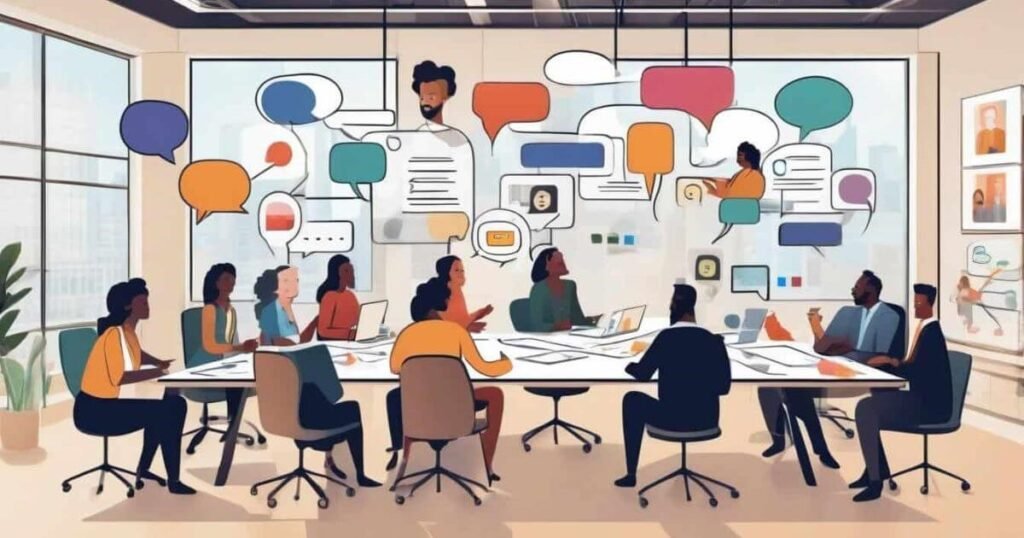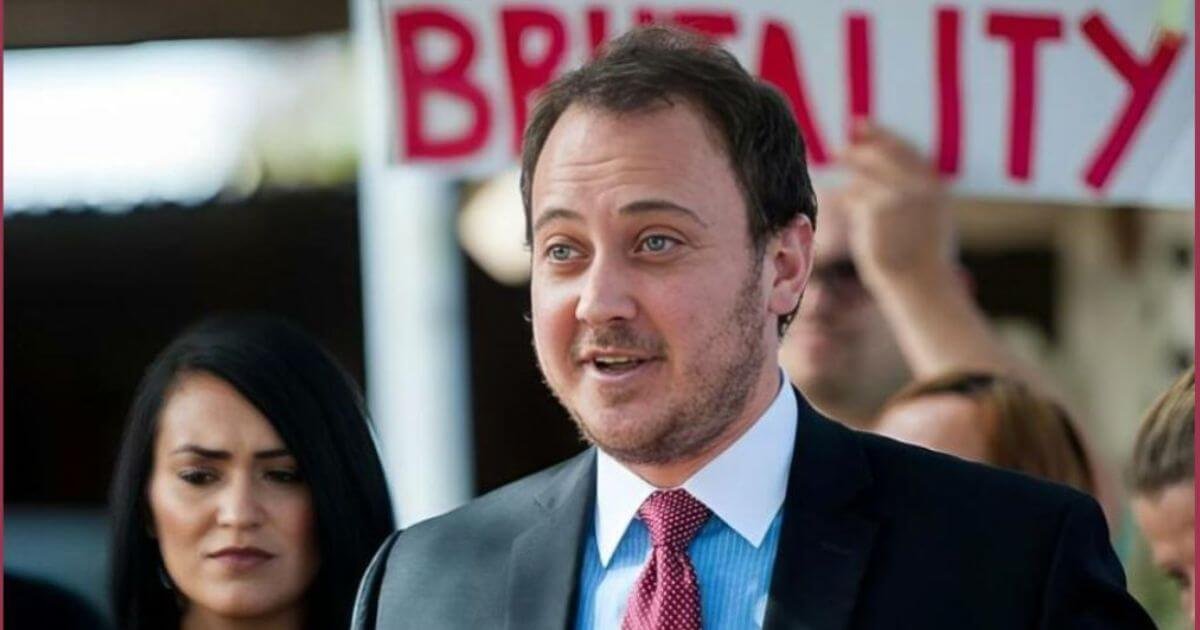Modern organizations face unprecedented challenges in enterprise environments where remote and hybrid teams demand sophisticated workflows that balance automation with human-centered leadership. The traditional approach of relying on manual overhead and reactive management creates bottlenecks that leaders struggle to identify without real-time insights into team performance and engagement.
EWMagWork represents a framework that integrates agile methodologies with emotional intelligence training, enabling collaboration through transparent communication channels and accountability systems. This structure emphasizes adaptability in organizational strategy while maintaining clarity in roles and responsibilities, fostering trust and psychological safety that allows teams to navigate external factors with empathy and precision.
What Is EWMagWork?
EWMagWork represents a comprehensive framework that transforms how organizations approach workplace management through strategic alignment of human needs with enterprise workflow optimization. This methodology integrates emotionally intelligent leadership with adaptive governance practices, creating connected teams that deliver results while maintaining employee engagement and satisfaction. The platform emphasizes transparency through real-time dashboards and automated tracking tools that provide insights into productivity metrics without falling into micromanagement traps.
The EWMagWork approach bridges traditional project management with agile methodologies, establishing a predictable cadence of daily standups, weekly reviews, and quarterly strategy meetings that foster accountability and collaboration. Teams experience reduced bottlenecks through RACI models that eliminate confusion around roles and responsibilities, while AI-powered analytics optimize resource allocation and identify potential delays before they become crises. This balanced workforce culture supports flexible work arrangements and remote collaboration, ensuring employees feel valued and motivated regardless of their office setup or hybrid work preferences.
Communication Channels
Effective communication serves as the oil that keeps organizational machinery running smoothly, creating channels where ideas can flourish and teams can share their concerns openly. Modern digital platforms and technology integration have transformed how colleagues interact, moving beyond traditional offices to embrace flexibility while maintaining clarity in dialogue.
The structure of communication channels directly impacts teamwork performance, as transparent workflows enable real-time updates and reduce the overwhelming burden of information overload. When leaders establish clear expectations and create safe environments for sharing, teams develop stronger trust and emotional intelligence, ultimately leading to more efficient collaboration and accountability.
Performance Management

Successful performance management requires leaders to move beyond traditional annual reviews toward continuous feedback systems that foster employee engagement and growth. Modern organizations implement data-driven approaches using analytics to identify performance gaps while maintaining psychological safety for teams to thrive.
Effective managers trained in emotional intelligence actively listen to team members and provide recognition for individual accomplishments, creating a supportive environment where employees can achieve their goals. Strategic alignment between organizational priorities and personal development opportunities ensures sustainable governance through consistent measurement and transparent processes.
Workplace Culture
Workplace Culture serves as the invisible ecosystem that determines whether teams truly thrive or merely survive in today’s dynamic business landscape. Unlike traditional approaches that focus on surface-level perks, authentic culture emerges from human-centered intelligence where empathy becomes the bridge connecting diverse members across all organizational levels.
The most resilient cultures operate like a well-tuned musical instrument, where each person contributes their unique voice while maintaining harmony with collective objectives. Leadership here acts as both compass and gardener, nurtures trust through consistent rhythm of check-ins and creates safe forums where feedback flows naturally, preventing miscommunication before it disrupts the work environment.
Tools and Collaboration
Effective collaboration requires more than just selecting the right platforms – it demands understanding how teams navigate complex workflows through integrated systems. Modern enterprise environments rely on automation features built into Trello, Asana, and Monday.com to reduce manual overhead while maintaining visibility across multiple departments. The strategy lies in choosing tools that support both hybrid and remote work arrangements without creating additional bottlenecks.
Analytics and metrics become the GPS for measuring progress when teams embrace agile workflows that adapt to changing markets. Smart implementation involves defining clear KPIs through OKRs and SMART goals, ensuring every task completion contributes to measurable outcomes. Decision-making frameworks like RACI eliminate duplication of effort while stakeholders maintain accountability through predefined logic and routine retrospectives.
The Five Pillars of the Management Guide EWMagWork
Drawing from years of implementing diverse management frameworks across multiple organizations, the EWMagWork methodology represents a shift toward integrated workplace excellence. Unlike traditional models that treat each element separately, this approach connects productivity, culture, and systems through five interconnected pillars that guide decision-making and shape organizational behavior.
The foundation rests on clear role delegation using RACI structures, while analytics and performance strategies create visibility into team velocity and deliverables. Communication channels bridge gaps between members, fostering trust and reducing miscommunication through structured feedback loops that celebrate both individual effort and collective success.
The EWMagWork Maturity Ladder: Measuring Growth
Precision in measuring organizational development requires moving beyond traditional surveys and engagement metrics to visualized analytics that track specific improvement across workflows. The maturity ladder binds together performance indicators with time-bound objectives, creating a measurable story of progress through defined stages.
Athletes understand that training demands attention to measurable results, and organizational behavior follows similar patterns where higher morale correlates with improved delivery and reduced error rate. Retrospectives become powerful tools for identifying risk points while automation triggers alerts for process optimization, transforming gradual adoption into scalable agility.
Implementing EWMagWork: A 90-Day Roadmap
Productive organizations launching EWMagWork implementation discover that positive momentum accelerates when teams work together through structured workflows that embrace adaptability to external factors. The initial phase demands careful attention to communication channels where misunderstandings often derail progress, requiring dedicated sessions to express thoughts clearly while maintaining the big picture perspective that McKinsey research emphasizes for project success.
Performance management during implementation requires sync between individual efforts and achievable, relevant goals that serve as organizational glue, creating learning opportunities through each development cycle. Team sprint methodology tracks key points while HR systems monitor quality defects, ensuring the cultural garden cultivates core values that acknowledge team spirits and promote work-life balance through flexible arrangements supporting employee well-being and happiness with openness to innovation.
Benefits of Applying the Management Guide EWMagWork
Effective leadership emerges when teams embrace structured workflows that help eliminate confusion and create sustainable growth. The guide transforms chaotic environments into organized systems where everyone contributes meaningfully to shared outcomes.
Productivity increases significantly as managers implement proven strategies that build stronger connections between individual efforts and organizational vision. Better decision-making flows naturally when transparent processes support both immediate goals and long-term success.
Common Challenges and How to Overcome Them

Adapting to changing business environments often creates chaos when teams lack consistent routines and governance. Many organizations struggle with reactive approaches, leading to defects in project delivery and employee fatigue. The key lies in establishing foundational practices that create alignment between individual motivation and enterprise goals. Through self-awareness and social regulation, managers can nurture a safe ecosystem where team spirits remain high despite mounting pressure.
Implementation challenges frequently stem from poor communication channels and inadequate training opportunities. Teams often pivot without proper documentation, creating inconsistent workflows that hinder collaboration. By introducing biweekly feedback loops and anonymous pulse surveys, organizations can identify problem areas before they escalate. Smart resource allocation combined with lean methodologies helps teams optimize their approach, transforming potential obstacles into learning experiences that strengthen overall performance.
Emotional Intelligence in Management
Daniel Goleman’s groundbreaking research reveals that psychology and meta-analysis studies consistently show EI correlates strongly with leadership effectiveness. Verified findings from the Journal of Organizational Behavior concluded that managers who emphasizes emotional self-awareness create more productive team environments. This aligns with decades of workplace observations where emotionally intelligent leaders naturally foster positive dynamics.
Through social regulation and heightened motivation, emotionally aware managers transform traditional hierarchies into collaborative networks where people work together more effectively. The competition between departments dissolves when leaders acknowledge individual well-being while maintaining core business objectives. Smart managers recognize that emotional intelligence isn’t just a soft skill—it’s the enabler that makes all other management tips genuinely enjoyable to implement.
Step-by-Step Guide to Workflow Optimization
Drawing from years of implementing organizational changes, the most effective workflow optimization begins with mapping your current processes before introducing any new systems. Smart managers recognize that successful transformation requires understanding existing bottlenecks and identifying where teams struggle most with coordination and task management.
Modern optimization strategies focus on creating seamless integration between people, technology, and workflows rather than forcing rigid structures. Experienced leaders prioritize building trust through transparent communication while establishing clear accountability measures that support both individual growth and collective productivity goals.
Conclusion
Workflow optimization reaches its pinnacle when data-driven insights merge with emotional intelligence, creating seamless operations that correlate with sustained employee satisfaction. The meta-analysis of successful enterprise implementations reveals that consistency in process mapping and analytics transforms complex workflows into intuitive systems. Through adequate training and step-by-step integration, organizations witness tangible benefits that extend beyond mere efficiency gains.
Recognition of maturity levels allows companies to assess their current state while scaling toward mastery of workflow optimization. The diagnostic approach using tools like Lucidchart, Notion, and Jira creates feedback loops that eliminate guesswork from decision-making processes. When leadership emphasizes both technical proficiency and emotional awareness, teams adapt quickly to change without losing direction or momentum in their optimization journey.
Frequently Asked Questions (FAQs)
What is EWMagWork?
EWMagWork is a modern platform designed to empower professionals with creative tools, insights, and resources.
How can EWMagWork help me?
It helps you stay updated, improve productivity, and connect with innovative trends in your field.
Is EWMagWork free to use?
Yes, EWMagWork offers free resources, with premium features for advanced users.
Who should use EWMagWork?
It’s perfect for entrepreneurs, freelancers, and anyone seeking creative growth.
How often is EWMagWork updated?
The platform is regularly updated with fresh content, tools, and expert tips.
Zainab Farooq is a dedicated reporter and celebrity wealth analyst with Pakistan Coverage, committed to bringing readers timely and accurate information across diverse topics. With a passion for storytelling and fact-based reporting, she covers everything from celebrity net worth insights and entertainment industry analysis to local Pakistani developments and global trends, ensuring readers stay informed about the stories that shape our world.




